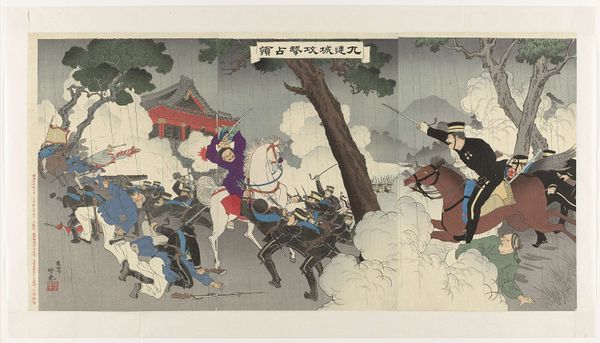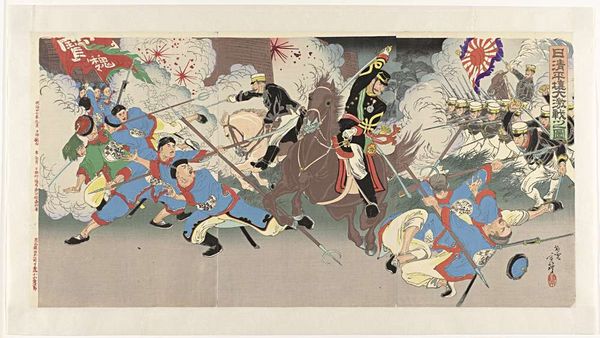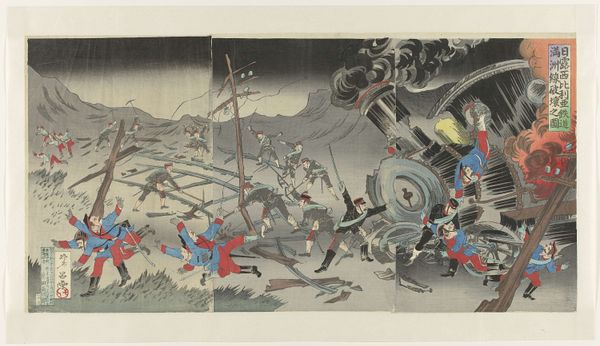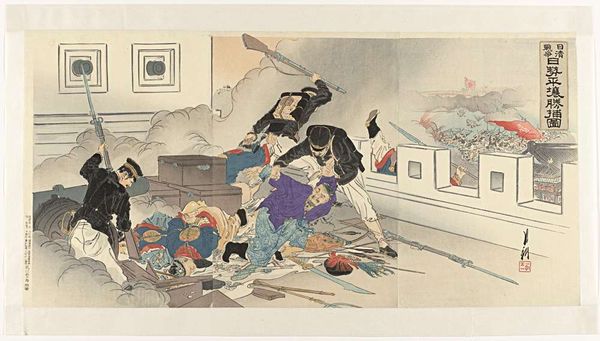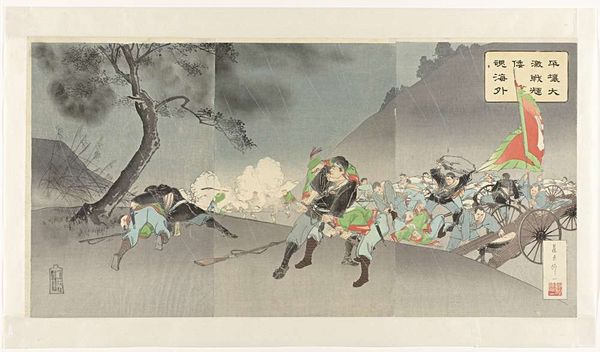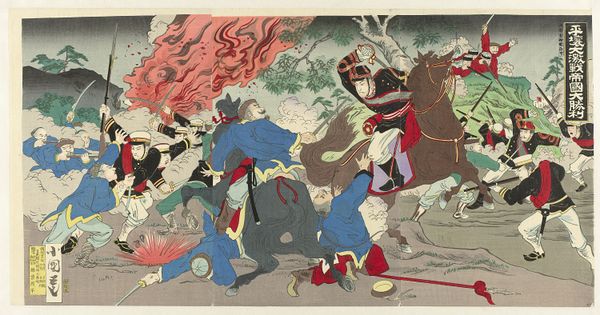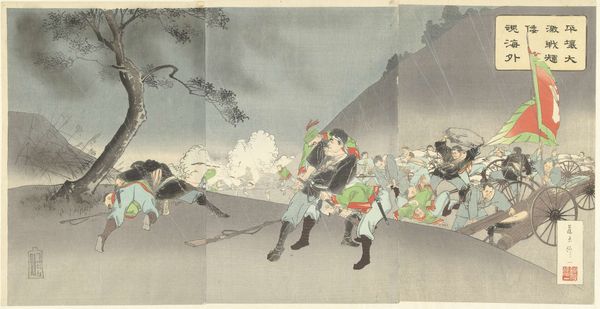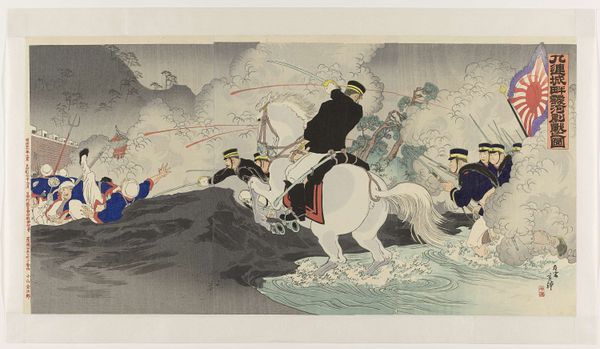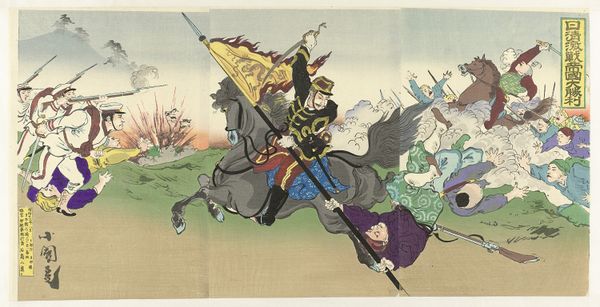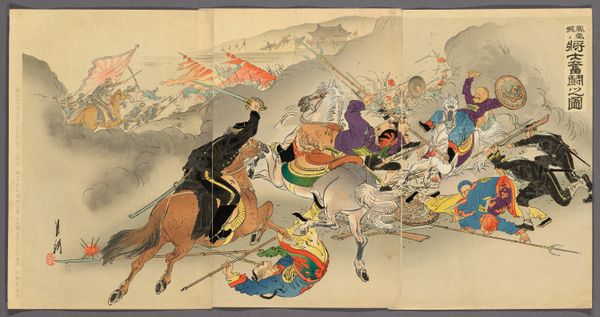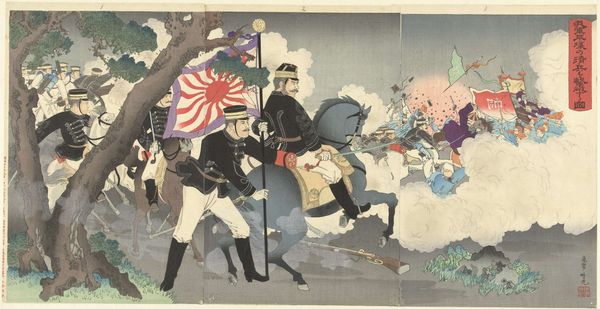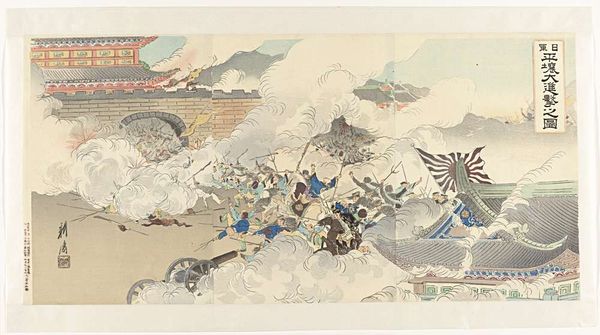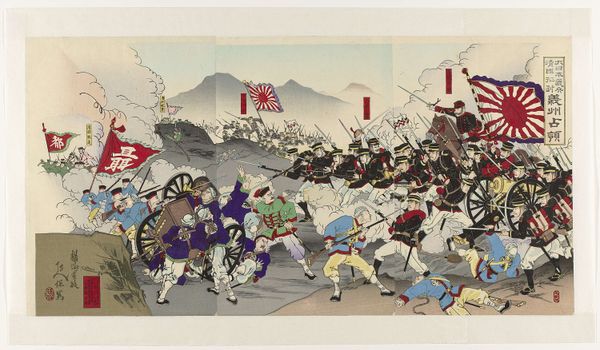
Dimensions: height 373 mm, width 719 mm
Copyright: Rijks Museum: Open Domain
Editor: This vivid print, titled "The Fall of Jinzhou - Our Second Army Captures Nanshan After Fierce Fighting" created in 1904, looks like a woodblock print, maybe Ukiyo-e style. I’m struck by the swirling composition and how it depicts this chaotic battle scene. How would you interpret this piece, focusing on its formal elements? Curator: This print exemplifies several crucial formal strategies. The triptych format, first, provides a narrative sweep allowing us to read the scenes right to left. The dramatic dynamism arises not from realistic proportion, but from how effectively each figure functions in compositional flow, almost like brushstrokes contributing to overall movement. The arrangement of these warring bodies within the limited tonal palette—note the skillful handling of negative space rendered in flat shades of pale grey and white—achieves a pictorial dynamism that would have otherwise been impossible. Editor: I see what you mean. It is not photorealistic at all. The way the soldiers and horses seem to fly through the air – it's almost dreamlike. And I was wondering about the Japanese text in the upper corner of the frame. It doesn't look part of the composition. How does that contribute to the artwork? Curator: Indeed. The calligraphy interacts less as text and more as graphic elements within the upper corner, harmonizing with and also deliberately interrupting pictorial structure with a stamp that anchors meaning. One could look at that symbolic structure alone for a considerable amount of time! Can you identify repeating shapes or contrasting lines? Editor: The diagonal lines are prominent throughout – from the charging soldiers to the plumes of smoke – and are even echoed in the angular script. And I think you're right, viewing the characters as shapes contributes another layer to the image. Curator: Precisely! Seeing the historical event translated into rhythmic lines, color blocks, and structured chaos encourages us to move beyond the literal into the conceptual— the underlying geometry governing visual engagement. Editor: So, analyzing its structural form helps uncover the visual message of the artwork. That is really helpful; thank you! Curator: Absolutely, and understanding such strategies are crucial in decoding not just this print, but similar examples across art history.
Comments
No comments
Be the first to comment and join the conversation on the ultimate creative platform.
